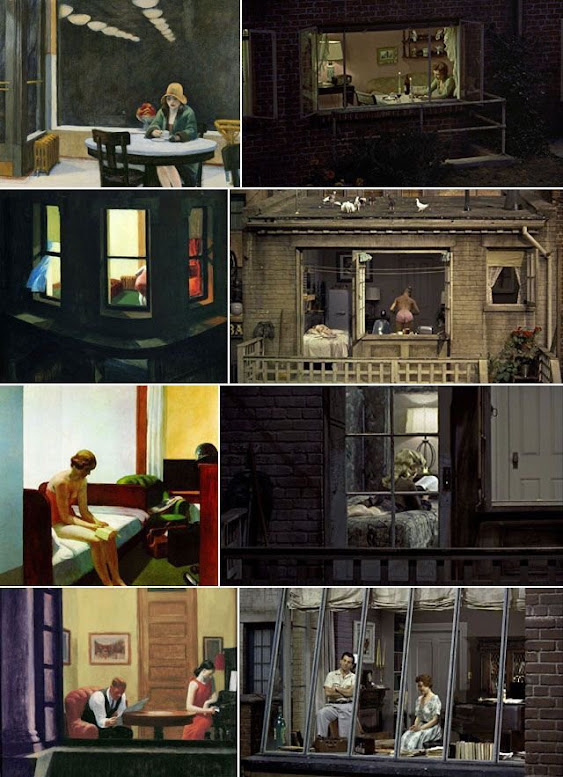Alfred Hitchcock: “He's a real Peeping Tom. In fact, Miss Lejeune, the critic of the London Observer,. complained about that. She made some comment to the effect that Rear Window was a horrible film because the hero spent all of his time peeping out of the window. What's so horrible about that? Sure, he's a snooper, but aren't we all?”
François Truffaut : “We're all voyeurs to some extent, if only when we see an intimate film. And James Stewart is exactly in the position of a spectator looking at a movie.”
Alfred Hitchcock : "Nothing could have prevented my making that picture, because my love for cinema is stronger than any morality. "
(all quotes above from Truffaut's 'Hitchcock', 1967)
Diane Doniol-Valcroze shows how Hitchcock adopted the framing of paintings like Hopper’s Automat (1927), Night Windows (1928), Hotel Room (1931), Room in New York (1932) for shots of Rear Window’s “Miss Torso” and “Miss Lonelyhearts.”
In the photomontage below, you see Hopper's painting and associated still from Alfred Hitchcock's 'Rear Window' , 1954.
Just as the power of Hopper’s paintings lies in what he chooses to exclude, so the tension and spectacle in Hitchcock’s Rear Window relies on what is obscured or unseen. In Hitchcockian cinema, the menace that often seems to lurk just out of frame in Hopper’s paintings can burst into the picture at any moment.
